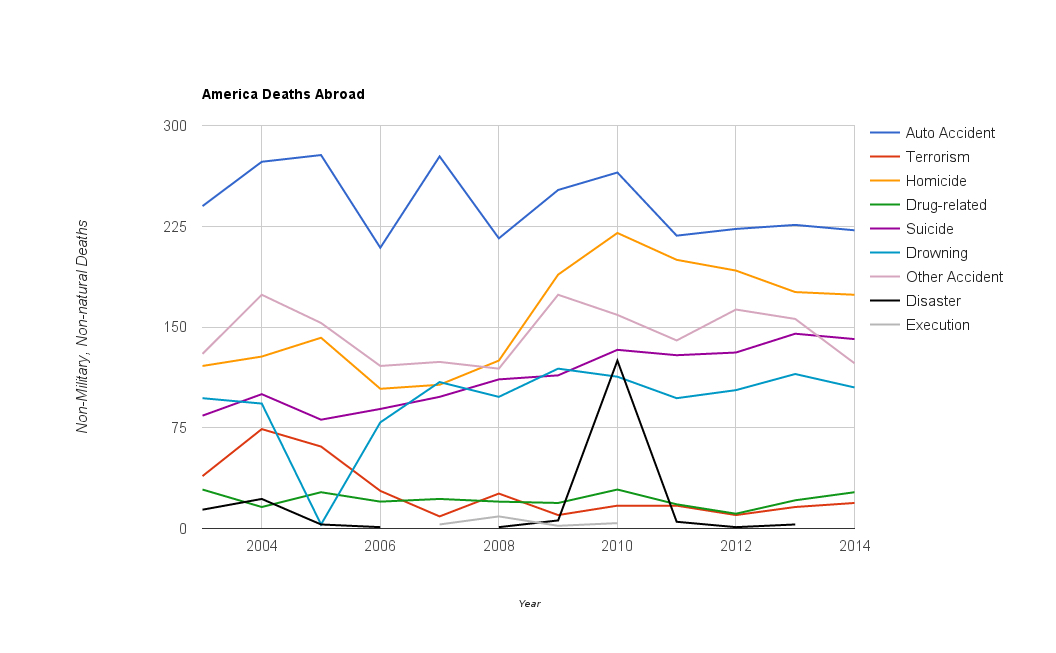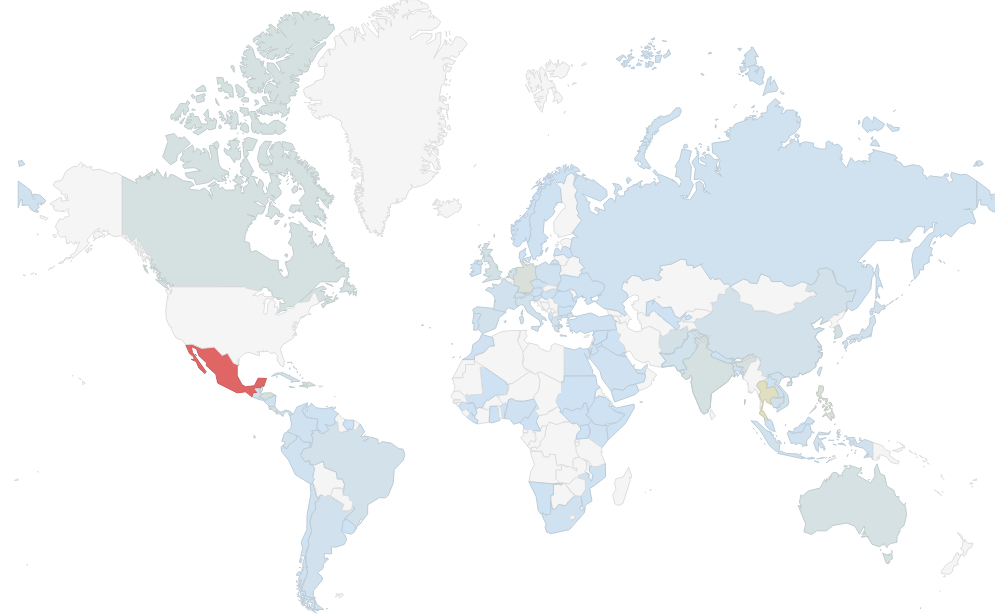We’ve been told that the world has become a much more dangerous place with increased threats to our safety. Joe Dunford, the nominee to be Chairman of the Joint Chiefs of Staff, spent his testimony to the U.S. Senate enumerating them.
Russia topped the list, but other threats to national security include China, the Islamic State, Iran’s interventions across the Middle East, and North Korea. With conversations ranging from nuclear threats to devious terrorists, one could forgive the American population for feeling uneasy.
On the other side of the argument, there are researchers like Harvard’s Steven Pinker who argue that we might be “living in the most peaceable era in our species.” They argue that while there are splashy headline conflicts occurring today, the grand trend in humanity is a reduction in high-intensity conflicts.
But, given the conversations held daily in the news and Washington, DC think tanks, the average American would likely agree with the former assessment over the latter. If the numbers are examined, however, how risky is it to be an American today? While the debate continues over whether or not the United States should engage with Iran, or what China’s rise means for the free world, what are American travelers experiencing abroad? The U.S. State Department was required by the Foreign Relations Authorization Act of Fiscal Year 2003 to make public information on the death of American travelers abroad, the locality of the death, and the cause of death. This information does not include military deaths, which is not to say that military deaths are unimportant, but that the death of a civilian is a very different thing than the death of a soldier. When the data released by the state department is examined, some interesting information comes to light.
The data for the chart above is taken from information released by the State Department and runs from 2002 to 2014. The information is not all that surprising, it makes sense that automobile accidents claim the most lives. After all, more tourists drive cars than encounter natural disasters or terrorists. What might be news to some people, however, is that deaths at the hands of terrorists have decreased since their peak in 2004. In 2004, terrorists killed seventy-four Americans abroad. In 2014, terrorists killed nineteen Americans. That’s a 74.4 percent reduction. As an American abroad in 2014, you were seven times more likely to commit suicide than be killed by a terrorist attack. You were also five and a half times more likely to drown, nine times more likely to be killed in a conventional homicide, and eleven times more likely to die in an automobile accident.
The map above shows where the deaths of non-military Americans occurred in 2014 (not counting domestic deaths). Blue is the lowest level of deaths, increasing to green and through to red. Mexico was by far the most dangerous place to be as an America; but then many more Americans travel to Mexico than anywhere else. In 2014, Americans made over twenty million trips to their Southern neighbor. Perhaps more surprising is how dangerous Germany was in 2014; it saw twenty-three American deaths. That was only six less than the entire continent of Africa. In terms of visits, Africa saw around 358,000 Americans in 2014, and Germany around 110,000. Thailand was also particularly perilous, with 43 deaths.
All of this might seem rather macabre, but the point being made is that traveling abroad is not as dangerous overall as might be expected, and certainly not in the places expected. Talk of danger abroad has more to do with strategic implications than it does for individual Americans. The American, and their representative in Congress, should be cautious of knee-jerk reactions to headlines about conflict and danger. Ramping up defense spending because of a feeling of unease, without consideration for cost-efficiency or effectiveness, should be avoided. Such actions make it harder to craft a responsible defense policy with limited resources when necessary. Just remember that, as an American traveling abroad, automobiles and depression are much more dangerous than terrorism.

